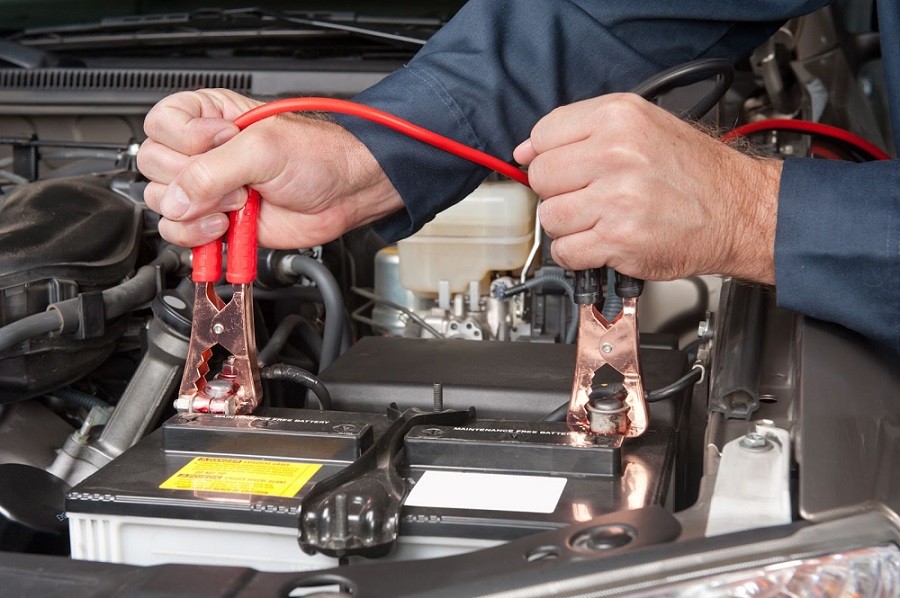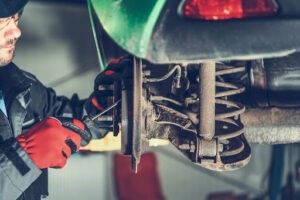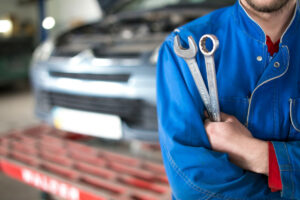When your car doesn’t start, it’s never a good feeling. It can be frustrating and embarrassing to call for roadside assistance or, worse yet, get towed home. Many things could cause your car not to start, including the battery being dead or just needing a jumpstart.
Here are a few steps you can take so next time your car doesn’t start, you know what to do.
Check to see if your battery is in good health by plugging it into an external power source such as jumper cables or a portable jump starter. – If your battery is dead, try jumping off with another vehicle with a healthy battery or call for roadside assistance from AAA, which will send someone to assist you at no charge.
If The Engine Won’t Start After You Turn The Key
It’s possible that the electrical problem is to blame.
You Might Have A Loose Battery Terminal
Check the battery terminals for corrosion. If your car doesn’t start when it’s cold, like on winter mornings, the problem could be loose battery terminals. Over time, heat from electrical components can cause batteries to expand, loosen their connections with clamps or cables that secure them to other parts of your vehicle.
Get underneath your hood and locate both positive (+) and negative (-) terminal clamps at either end of your; they’re typically red and black, respectively. Loosen the clamps with a wrench (or pliers if they’re too tight) and then tighten them back up. That can usually solve your problem in less than five minutes. If you don’t know what you are doing or feel uncomfortable tinkering under the hood of your car, it’s best to call an automotive service center for assistance instead.
You Might Have Corroded Battery Terminals.
When you’re stranded without tools, there’s no way to clean corroded battery terminals. However, you may try moving or at the very least jarring the terminals in an attempt to make better contact. If the car doesn’t start, apply pressure to each battery terminal with the shoe heel to turn it slightly around the battery post. Then try again.
If it still won’t start, wait an hour or two to see if the battery has a charge. If you have jumper cables, use them on another car that’s running, and then try starting your car again after half an hour of charging time.

You Might Have A Dead Battery
A dead battery can be the result of a variety of factors. The most typical vehicle breakdown is a dying battery, so having jumper cables on hand is essential. Even if you jumpstart a vehicle that is in motion, the alternator should replenish the battery.
If this problem occurs often, you may help by removing any corrosion from the battery contacts. If this doesn’t work, the battery will need to be replaced.
You Might Have Broken Or Weakened Starter
If you can find the engine’s starter motor beneath the hood of your automobile, you may rule out whether it’s the source of the issue. Your battery might be dead if you don’t hear clicking when you turn on the ignition.
The starter may not be receiving adequate power if there is clicking but no cranking. If you have a broken or weakened starter, the engine should turn over with no problem at all.
You Might Have A Faulty Starter Relay
A faulty starter relay is another potential cause of this issue. The starter works by using heavy-duty electrical wiring to connect it directly to your battery so that there are no interruptions in power between when you start the ignition and when the car starts moving forward. If any of these wires have been damaged, starting up may prove extremely difficult, if not impossible.
If none of these options work, consider calling a tow truck—you might need more advanced help from an auto mechanic than what can be provided via phone calls and Google research.
You Might Have Damaged Ignition Switch
A broken or damaged ignition switch can prevent your vehicle from starting in the same way as a defective starter engine. If your headlights come on, but your car won’t start, one of two things is wrong: the battery is charged but either the starter or ignition are faulty.
A charged battery can jump-start the engine if the problem is with the starter or ignition.
If The Engine Cranks Over But The Car Refuse Start
An automobile won’t start if it’s cranking but not starting because the electrical is good. To get your car started correctly, you’ll need electricity, air, gasoline, and compression in that order.
Your Fuel Tank Is Empty
The problem might be in the tank, even if your gas gauge doesn’t show it. If your fuel gauge is slightly misaligned, you may inadvertently run out of petrol.
Beware of the smell of gasoline if you suspect that your gas tank is empty. Gasoline smells can indicate a leak in some areas around the fuel system, which may be dangerous to you and others nearby.
You Might Have Trouble With The Fuel Pump Relay
A faulty fuel pump might not deliver enough petrol to get your engine started at all. If it’s working correctly, but there are issues with other parts of the fuelling system, such as clogged fuel filter or exhaust line, then starting up could prove impossible altogether.
You Might Have Flooded Engine
If you have an old vehicle with a carbureted engine, there’s a good chance your machine is being flooded. That occurs when the spark plugs are wet and will not spark due to too much fuel in the engine.
This step is vital because it removes any remaining fuel from the combustion chamber. Hold the gas pedal down and turn the engine over; this will eliminate any excess gasoline.
Need A Help With Your Car
If you’re experiencing car troubles, don’t worry. Dependable Car Care is here to help with all of your auto repair needs.
Visit us today for more information about our services, or call today to schedule an appointment!




